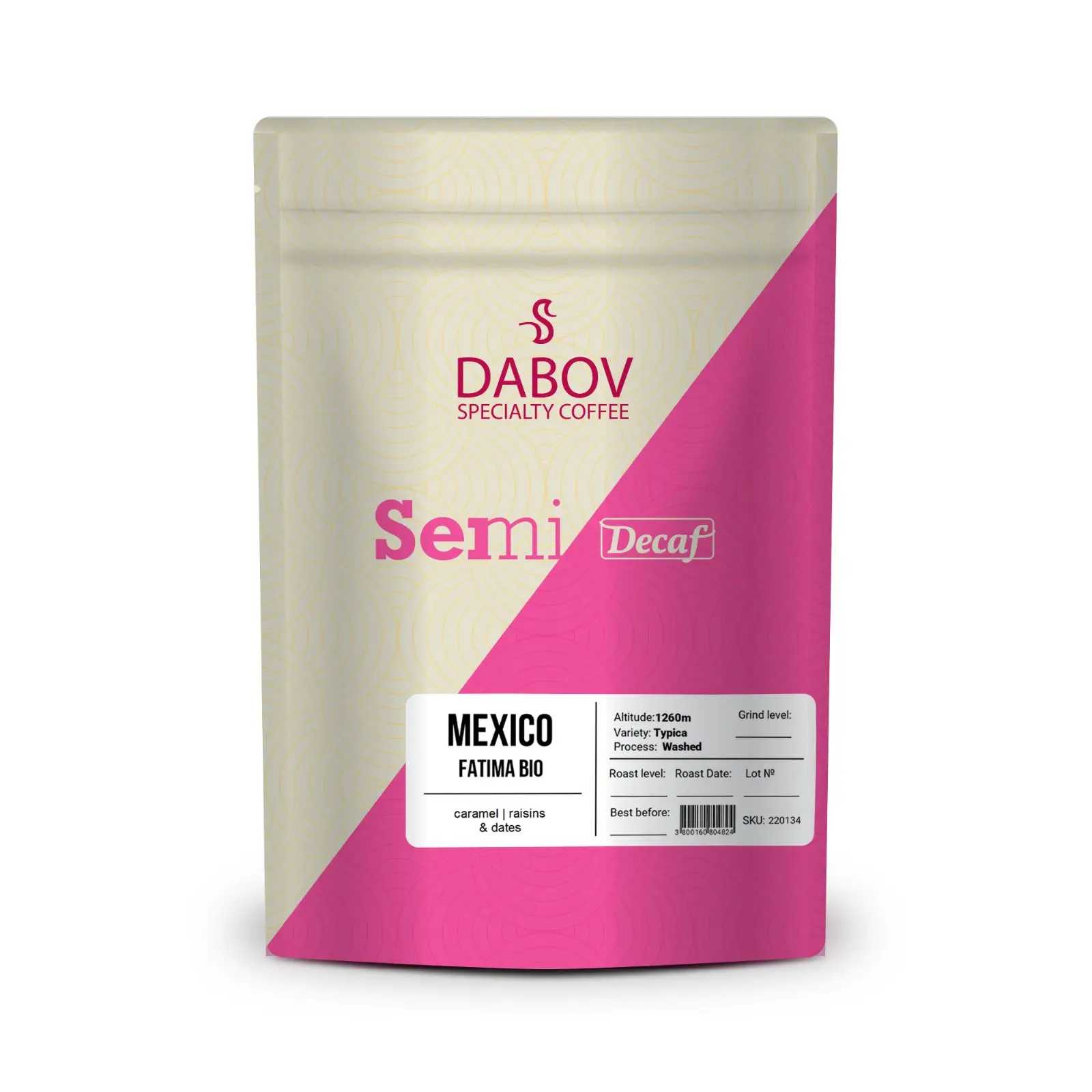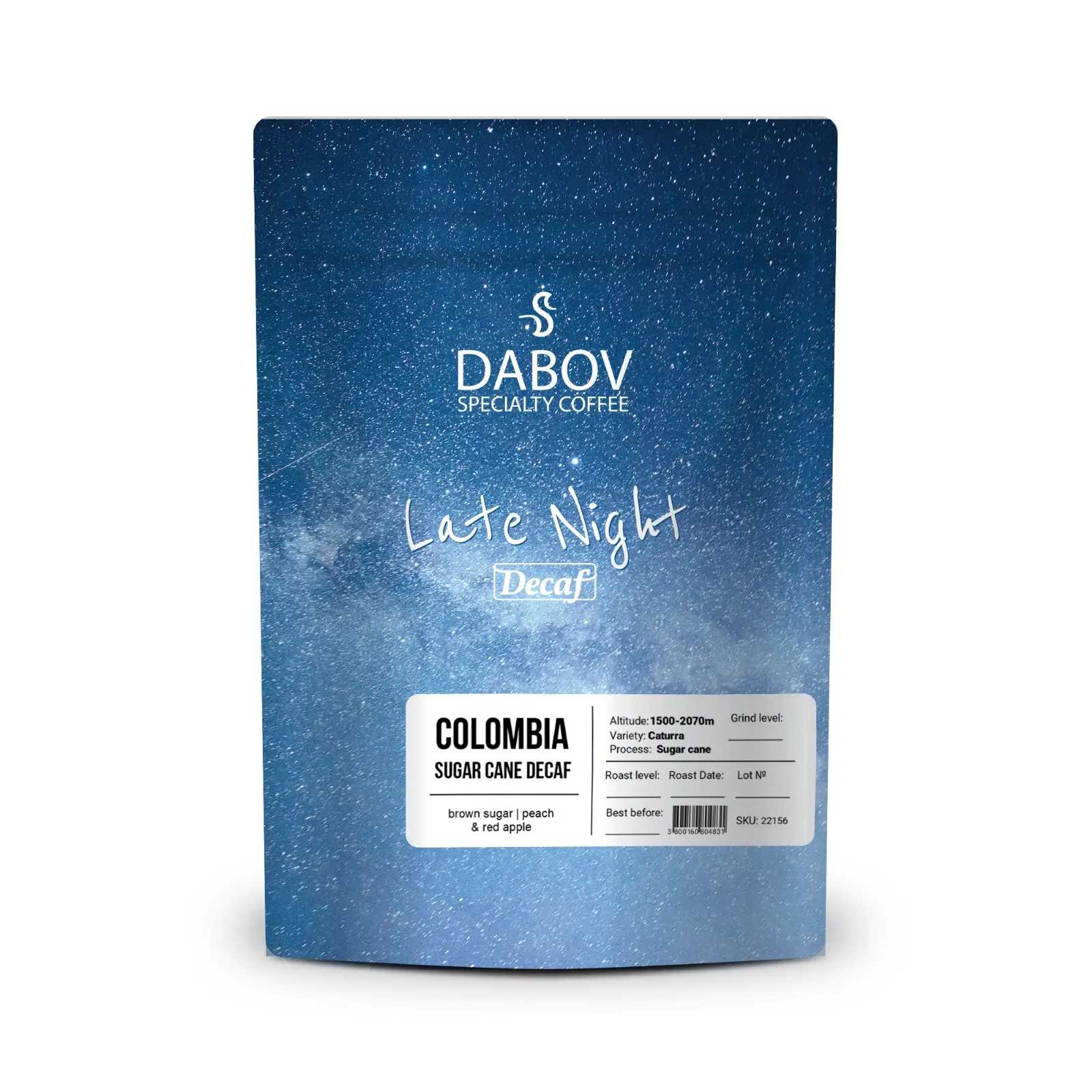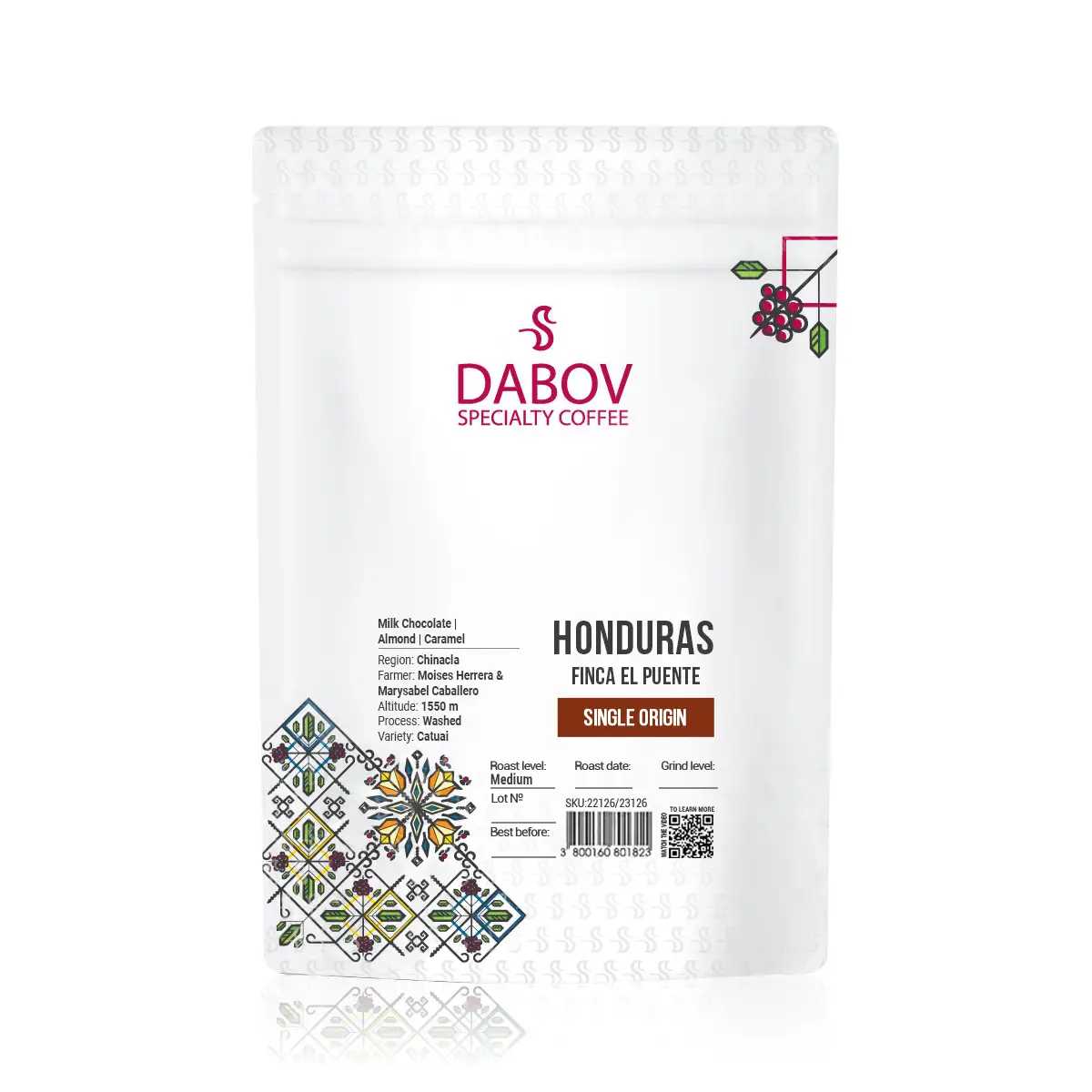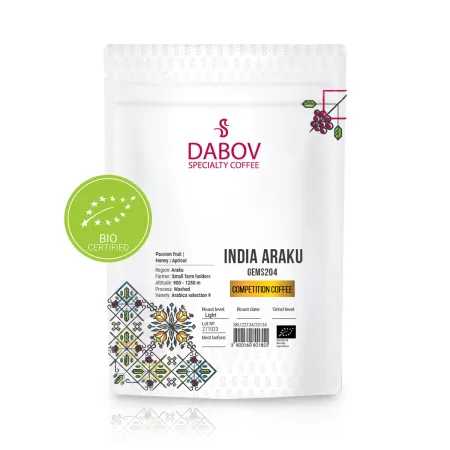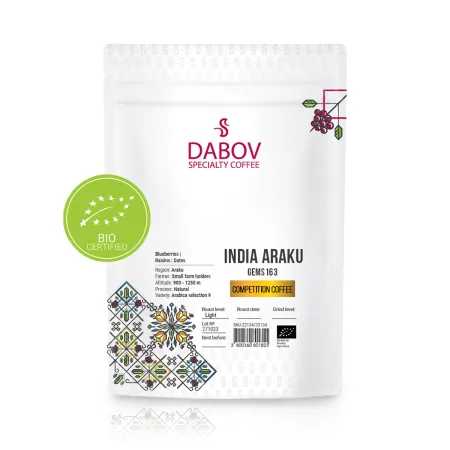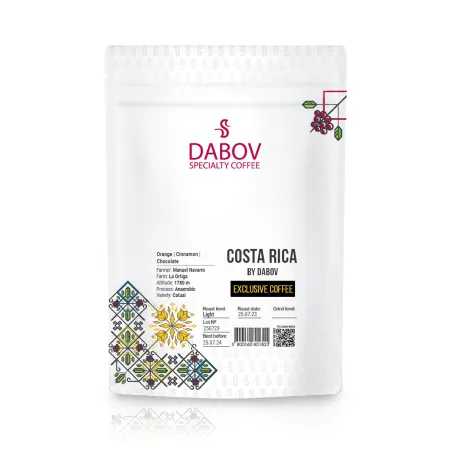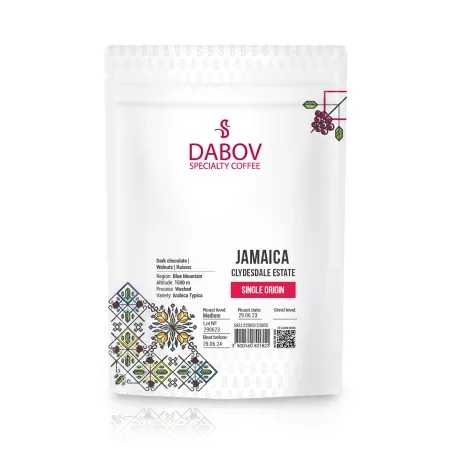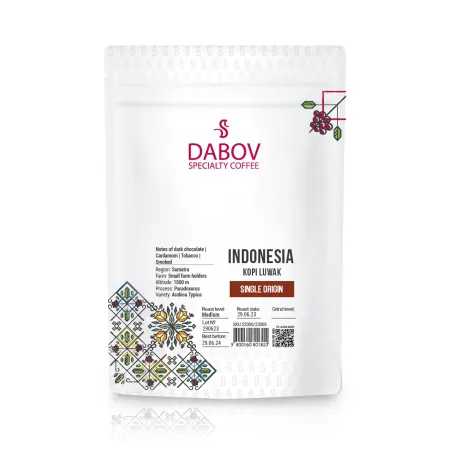The Impact of Bean Density on Roasting Outcomes
Coffee roasting is an art that hinges on various factors, with bean density being one of the most crucial influences on the final flavor and aroma. Understanding this intricate relationship not only enhances the roasting process but also elevates the quality of your brew. In this article, we delve into the nuances of coffee bean density, exploring how it impacts roasting outcomes, flavor development, and quality indicators. From examining the science behind bean density to providing practical roasting guidelines, this comprehensive analysis is essential for coffee enthusiasts and professional roasters alike. Join us as we uncover the secrets to achieving the perfect roast by mastering the importance of bean density in your coffee journey.
Coffee roasting is an art form that requires precision, skill, and a deep understanding of the complex interplay between various factors that influence the final product. Among these factors, coffee bean density stands out as a crucial yet often overlooked element that can significantly impact roasting outcomes. In this comprehensive exploration, we'll delve into the intricate relationship between bean density and the roasting process, uncovering how this fundamental characteristic shapes the flavor, aroma, and overall quality of your coffee.
Introduction
Coffee roasting is the transformative process that turns raw, green coffee beans into the aromatic, flavorful beans we grind for our daily brew. This process is not merely about applying heat; it's a delicate dance of chemical reactions, physical changes, and flavor development that requires a nuanced approach. At the heart of this process lies the inherent characteristics of the coffee beans themselves, with density playing a pivotal role in determining how these beans respond to the roasting environment.
Bean density, simply put, is a measure of how compact the internal structure of a coffee bean is. This characteristic is influenced by a myriad of factors, from the coffee plant's genetics to the environmental conditions in which it was grown. Understanding bean density is crucial for coffee roasters because it directly affects how heat is absorbed and distributed throughout the bean during the roasting process. This, in turn, impacts the development of flavors, aromas, and the overall quality of the roasted coffee.
The purpose of this article is to provide an in-depth analysis of how bean density influences roasting outcomes. We'll guide you through the complex relationship between density and roasting, offering insights that will help both novice and experienced roasters refine their craft. By the end of this exploration, you'll have a comprehensive understanding of how to adjust your roasting approach based on bean density, ultimately leading to more consistent and higher-quality results in your coffee roasting endeavors.
1. Understanding Coffee Bean Density
1.1 What is Coffee Bean Density?
Coffee bean density is a fundamental characteristic that refers to the mass of a coffee bean in relation to its volume. In simpler terms, it's a measure of how tightly packed the internal structure of the bean is. This property is crucial in the world of coffee because it influences everything from how the bean absorbs heat during roasting to how it releases flavors when brewed.
Measuring coffee bean density can be done through various methods, each with its own level of precision. One common approach is the water displacement method, where a known volume of beans is submerged in water, and the volume of water displaced is measured. Another method involves using specialized equipment like a density meter, which provides more accurate results but is typically found in professional settings or research laboratories.
It's important to note that coffee bean density isn't uniform across all varieties and origins. In fact, there can be significant variations in density even within beans from the same harvest. Generally, coffee beans are classified into three density categories: low, medium, and high. High-density beans are often associated with higher elevations, slower maturation processes, and more complex flavor profiles. These beans tend to be harder and more compact, requiring different roasting approaches compared to their lower-density counterparts.
Understanding the density of your coffee beans is not just an academic exercise; it's a practical necessity for achieving optimal roasting results. Density affects how quickly the beans heat up, how they expand during roasting, and ultimately, how the flavors develop. A high-density bean will typically require more energy to roast effectively, while a lower-density bean might need a gentler approach to avoid over-roasting.
1.2 Factors Affecting Bean Density
The density of coffee beans is not a static characteristic but rather the result of a complex interplay between various factors, both internal and external. Understanding these factors can provide valuable insights into why beans from different origins or even different harvests from the same farm can exhibit varying densities.
Internal factors primarily relate to the genetics of the coffee plant and the growing conditions. The variety of coffee plant plays a significant role in determining bean density. For instance, Arabica varieties generally produce denser beans compared to Robusta. Within the Arabica family, heirloom varieties often yield beans with higher density than more modern, disease-resistant cultivars.
Elevation is another crucial factor. Coffee grown at higher altitudes typically develops more slowly due to cooler temperatures, resulting in denser beans. This is why high-altitude coffees are often prized for their complex flavor profiles – a characteristic directly linked to their higher density. The soil composition also plays a role, with nutrient-rich soils contributing to the development of denser beans.
External factors that influence bean density include processing methods and storage conditions. The way coffee cherries are processed after harvesting can affect the final density of the beans. For example, natural (dry) processing, where the cherries are dried with the fruit intact, can sometimes result in slightly lower density beans compared to washed processing methods.
Storage conditions post-processing are equally important. Improper storage, especially in high-humidity environments, can lead to moisture reabsorption, potentially altering the bean's density. This is why proper storage in climate-controlled environments is crucial for maintaining the integrity of the beans.
Understanding these factors is essential for both coffee roasters and green coffee buyers. For roasters, it provides context for why beans from different origins or harvests might require adjustments to their roasting profiles. For buyers, it offers insights into the potential quality and roasting characteristics of the beans they're considering purchasing.
By considering both the internal and external factors affecting bean density, coffee professionals can make more informed decisions throughout the supply chain, from sourcing to roasting, ultimately leading to a better cup of coffee for the end consumer.
2. Bean Density and Coffee Quality
2.1 How Density Correlates with Quality
The relationship between coffee bean density and quality is a topic of great interest in the specialty coffee industry. While it's important to note that density alone doesn't determine quality, there is a strong correlation between higher density beans and superior cup quality. This connection is rooted in the physiological development of the coffee cherry and the conditions that contribute to both increased density and enhanced flavor complexity.
High-density beans are often associated with slower maturation processes, typically found in coffee grown at higher elevations. This slower growth allows for more time for complex sugars and organic acids to develop within the bean. These compounds are precursors to many of the desirable flavors and aromas we associate with high-quality coffee. When roasted, these dense beans tend to produce more vibrant acidity, pronounced sweetness, and a wider range of flavor notes.
Moreover, denser beans often have a more uniform cell structure, which can lead to more even roasting. This uniformity contributes to a cleaner, more balanced cup profile. In contrast, lower density beans may roast less evenly, potentially resulting in a mix of under and over-roasted flavors in the final cup.
It's worth noting that the correlation between density and quality is not absolute. Factors such as processing methods, storage conditions, and roasting skill all play crucial roles in determining the final cup quality. However, starting with high-density beans provides a solid foundation for achieving exceptional results.
From a roaster's perspective, understanding the density-quality correlation is crucial for developing appropriate roasting profiles. Higher density beans typically require more energy input and longer roasting times to fully develop their flavor potential. Skilled roasters can leverage this knowledge to coax out the best qualities from these beans, resulting in coffees with more complexity, clarity, and depth of flavor.
2.2 Density as an Indicator of Freshness
Beyond its correlation with overall quality, coffee bean density can also serve as a valuable indicator of freshness. This aspect of density is particularly relevant for roasters and consumers alike, as it can provide insights into the potential flavor development and shelf life of the coffee.
Freshly harvested and properly processed coffee beans tend to have a higher density compared to older beans. This is because, over time, coffee beans slowly lose moisture and undergo subtle chemical changes that can affect their internal structure. As beans age, they may become slightly less dense, which can impact their behavior during roasting and ultimately, their flavor in the cup.
For roasters, understanding this relationship between density and freshness is crucial for several reasons. Firstly, it helps in determining the appropriate roasting profile. Fresher, denser beans may require slightly different roasting parameters compared to older beans of the same variety. Secondly, it aids in quality control and inventory management. By regularly measuring the density of stored green coffee, roasters can monitor any changes that might indicate aging or improper storage conditions.
Consumers can also benefit from this knowledge, albeit indirectly. While it's not practical for most consumers to measure bean density at home, understanding that density correlates with freshness can inform purchasing decisions. For instance, specialty coffee roasters who prioritize freshness and quality are more likely to work with high-density, recently harvested beans. This attention to density and freshness often translates to a superior cup quality for the end consumer.
It's important to note that while density can be an indicator of freshness, it should not be the sole factor considered. Proper storage conditions can help maintain the quality of coffee beans over time, even if there's a slight decrease in density. Conversely, even high-density beans can deteriorate quickly if stored improperly.
In the context of roasting outcomes, the freshness indicated by bean density can significantly impact flavor development. Fresher, denser beans often produce more vibrant and complex flavors during roasting, with a better expression of origin characteristics. They also tend to have a longer shelf life post-roast, maintaining their flavor profile for a more extended period.
By considering bean density as an indicator of freshness, both roasters and consumers can make more informed decisions about coffee selection, storage, and preparation, ultimately leading to a more satisfying coffee experience.
3. The Roasting Process Explained
3.1 Overview of Coffee Roasting
Coffee roasting is a complex process that transforms raw, green coffee beans into the aromatic, flavorful beans we use for brewing. This transformation involves a series of physical and chemical changes that occur as the beans are exposed to heat. Understanding the basics of this process is crucial for appreciating how bean density impacts the final outcome.
The primary goal of roasting is to develop the flavors locked within the green coffee beans. This is achieved through a carefully controlled application of heat, which triggers various reactions within the beans. As the beans heat up, they undergo physical changes such as expansion and color change, while simultaneously experiencing chemical reactions that create the complex flavors and aromas associated with roasted coffee.
There are several methods of coffee roasting, each with its own advantages and characteristics. The two most common methods are drum roasting and air roasting. Drum roasting involves tumbling the beans in a rotating drum that's heated either directly (by gas flames under the drum) or indirectly (by hot air circulating around the drum). This method allows for even heat distribution and is favored for its ability to develop deep, complex flavors.
Air roasting, on the other hand, uses hot air to both heat and agitate the beans. This method is known for producing cleaner, brighter flavors and is often preferred for lighter roasts. The choice between these methods can significantly impact the final flavor profile, especially when considering beans of different densities.
Regardless of the method used, the roaster must carefully control several variables throughout the process. These include the initial charge temperature (the temperature at which the beans are introduced to the roaster), the rate of heat application, and the total roasting time. Each of these factors must be adjusted based on the characteristics of the beans being roasted, with density being a key consideration.
The art of roasting lies in balancing these variables to achieve the desired flavor profile while avoiding common pitfalls such as under-roasting (which can result in grassy, underdeveloped flavors) or over-roasting (which can lead to bitter, burnt tastes). This balance becomes even more critical when working with beans of varying densities, as we'll explore in more detail in the following sections.
3.2 Stages of Roasting
The coffee roasting process can be broken down into several distinct stages, each characterized by specific physical and chemical changes within the beans. Understanding these stages is crucial for roasters, as it allows for precise control over the development of flavors and aromas. Moreover, the way beans of different densities progress through these stages can vary significantly, making this knowledge essential for achieving optimal results.
- Drying Stage:This initial stage begins as soon as the beans enter the roaster. The primary goal here is to evaporate the moisture content of the green beans, which typically ranges from 10-12%. During this stage, the beans remain green but gradually become yellow. For denser beans, this stage may take longer as the moisture is more tightly bound within the bean structure. Roasters must be careful not to apply too much heat too quickly, especially with high-density beans, as this can lead to tipping (scorching of the bean tips) or uneven roasting.
- Browning Stage:As the beans continue to heat up, they enter the browning stage. This is where the Maillard reaction begins, a complex series of chemical reactions between amino acids and reducing sugars. These reactions are responsible for the development of many flavor compounds and the characteristic brown color of roasted coffee. During this stage, the beans start to emit a bread-like aroma and continue to expand in size. Higher density beans often require more energy input to progress through this stage effectively.
- First Crack:The first crack marks the beginning of the light roast stage and is characterized by an audible cracking sound as the beans expand and release built-up gases and moisture. This typically occurs around 385°F (196°C). The timing and intensity of the first crack can vary depending on bean density. Denser beans may reach this stage later and exhibit a more pronounced first crack.
- Development Stage:The period between the first crack and the end of the roast is known as the development stage. This is where the roaster has the most control over the final flavor profile. Sugars continue to caramelize, oils begin to migrate to the surface of the beans, and the body of the coffee develops. The length of this stage can significantly impact the final taste, with longer development times generally resulting in fuller body and reduced acidity. Bean density plays a crucial role here, as denser beans often benefit from longer development times to fully realize their flavor potential.
- Second Crack (Optional):If the roast continues beyond the development stage, it will eventually reach the second crack, typically around 435-445°F (224-229°C). This stage is characterized by another series of audible cracks as the cellular matrix of the beans breaks down further. Roasts taken to this point are considered medium-dark to dark. Due to their structure, high-density beans may require more time or higher temperatures to reach this stage compared to lower density beans.
- Cooling:Once the desired roast level is achieved, the beans must be cooled quickly to halt the roasting process. This is typically done using forced air or water quenching. Proper cooling is crucial to prevent over-roasting and to lock in the developed flavors.
Throughout these stages, bean density plays a significant role in how the beans absorb and retain heat, how quickly they progress through each stage, and ultimately, how the flavors develop. Higher density beans generally require more energy input and often benefit from slightly longer roasting times to fully develop their complex flavor profiles. Lower density beans, on the other hand, may progress through these stages more quickly and require a more delicate approach to avoid over-roasting.
By understanding these stages and how bean density affects progression through them, roasters can make informed decisions about heat application, roast duration, and development time. This knowledge is key to consistently producing high-quality roasts that showcase the unique characteristics of each coffee, regardless of its density.
4. The Impact of Bean Density on Roasting Outcomes
4.1 Temperature and Time Adjustments
The density of coffee beans plays a crucial role in determining the optimal temperature and time settings for roasting. Understanding how to adjust these parameters based on bean density is essential for achieving consistent, high-quality results. Let's delve into the specifics of how density influences these key roasting variables.
Temperature Adjustments:High-density beans typically require higher temperatures to effectively penetrate the bean structure and initiate the necessary chemical reactions for flavor development. This is because denser beans have a more compact cellular structure, which can resist heat transfer. As a result, roasters often need to use higher charge temperatures (the initial temperature of the roasting drum) when working with high-density beans.
For example, while a medium-density bean might be introduced to a drum roaster at around 380°F (193°C), a high-density bean might require a charge temperature of 400°F (204°C) or even higher. This higher initial temperature helps to overcome the bean's resistance to heat absorption and ensures that the roasting process progresses smoothly.
Conversely, lower density beans require a more cautious approach to temperature. These beans heat up more quickly and can easily scorch if exposed to too much heat too soon. For lower density beans, a lower charge temperature, perhaps around 360°F (182°C), might be more appropriate.
Time Adjustments:The density of coffee beans also significantly impacts the overall roasting time and the duration of specific roasting stages. High-density beans generally require longer roasting times to fully develop their flavors. This is because it takes more time for the heat to penetrate the dense structure of the bean and trigger the necessary chemical reactions.
For instance, while a medium-density bean might reach first crack after about 8-9 minutes of roasting, a high-density bean could take 10-11 minutes or even longer to reach the same stage. The development time (the period between first crack and the end of the roast) may also need to be extended for high-density beans to allow for full flavor development.
Lower density beans, on the other hand, tend to roast more quickly. Roasters need to be vigilant when working with these beans, as they can progress through the roasting stages rapidly. A shorter overall roast time, perhaps 10-12 minutes total, might be appropriate for low-density beans, compared to 14-16 minutes for high-density beans.
Practical Examples:To illustrate these adjustments, let's consider a hypothetical roasting profile for beans of different densities:
- High-Density Bean (e.g., high-altitude Ethiopian Yirgacheffe):
- Charge Temperature: 400°F (204°C)
- Time to First Crack: 10-11 minutes
- Development Time: 2-3 minutes
- Total Roast Time: 14-16 minutes
- Medium-Density Bean (e.g., Colombian Supremo):
- Charge Temperature: 380°F (193°C)
- Time to First Crack: 8-9 minutes
- Development Time: 1.5-2 minutes
- Total Roast Time: 12-14 minutes
- Low-Density Bean (e.g., Brazilian Naturals):
- Charge Temperature: 360°F (182°C)
- Time to First Crack: 7-8 minutes
- Development Time: 1-1.5 minutes
- Total Roast Time: 10-12 minutes
It's important to note that these are general guidelines, and actual roasting parameters can vary based on factors such as roasting equipment, batch size, and desired roast level. Successful roasters often keep detailed logs of their roasting profiles for different bean densities, allowing them to refine their approach over time and achieve consistent results.
By carefully adjusting temperature and time based on bean density, roasters can ensure that each batch of coffee reaches its full flavor potential, resulting in a superior cup quality that showcases the unique characteristics of the beans.
4.2 Flavor Development and Aroma Profiling
The density of coffee beans plays a significant role in how flavors and aromas develop during the roasting process. Understanding this relationship is crucial for roasters aiming to bring out the best qualities in each batch of coffee. Let's explore how bean density influences flavor development and aroma profiling, and what characteristics are typically associated with different densities.
High-Density Beans:High-density beans are often prized for their potential to produce complex and nuanced flavor profiles. These beans typically require more heat energy and longer roasting times to fully develop their flavors. As a result, they often exhibit:
- Brighter Acidity: The slower heat penetration in dense beans allows for the preservation of organic acids, leading to a more pronounced and vibrant acidity in the cup.
- Complex Sweetness: The extended roasting time allows for more complete sugar caramelization, often resulting in a deeper, more complex sweetness.
- Floral and Fruit Notes: High-density beans often retain delicate floral and fruit aromatics that can be lost in less dense beans.
- Better Balance: The slower development often leads to a more balanced flavor profile, with acidity, sweetness, and bitterness in harmony.
- Longer Aftertaste: The complexity of flavors in high-density beans often translates to a longer, more satisfying aftertaste.
Medium-Density Beans:Medium-density beans offer a balance between the characteristics of high and low-density beans. They typically:
- Develop a Good Balance of Flavors: These beans often produce well-rounded cups with a harmonious blend of acidity, sweetness, and body.
- Exhibit Clear Origin Characteristics: Medium-density beans often clearly express the typical flavors associated with their origin.
- Offer Versatility in Roasting: They can be roasted to various levels while maintaining good flavor development.
Low-Density Beans:Low-density beans heat up more quickly during roasting and require careful attention to avoid over-roasting. They often produce coffees with:
- Milder Acidity: The quicker heat penetration can lead to a reduction in organic acids, resulting in a softer acidity.
- Prominent Body: Low-density beans often develop a fuller body more quickly than their denser counterparts.
- Nutty and Chocolatey Notes: These beans tend to develop roast-driven flavors more readily, often exhibiting nutty, chocolatey, or caramel-like notes.
- Shorter Flavor Arc: The flavor experience may be more immediate but with a shorter aftertaste compared to higher density beans.
Aroma Profiling:The aromas developed during roasting are closely tied to bean density. High-density beans often produce more complex and layered aromas, with floral, fruity, and spicy notes being more prominent. These aromas tend to evolve and change as the coffee cools, offering a dynamic sensory experience.
Medium-density beans typically produce balanced aromas that clearly reflect their origin characteristics. The aroma profile might include a mix of fruity, nutty, and sweet notes, depending on the specific bean and roast level.
Low-density beans often develop stronger roast-related aromas more quickly. These can include toasty, caramel-like, or even slightly smoky notes, especially if care is not taken to avoid over-roasting.
Roasters must be attuned to these density-related characteristics to make informed decisions during the roasting process. For example, to preserve the delicate floral notes in a high-density bean, a roaster might opt for a lighter roast profile with a carefully controlled development time. Conversely, to bring out the best in a low-density bean, a roaster might focus on developing body and sweetness while being cautious not to over-roast and introduce bitter or burnt flavors.
By understanding how bean density influences flavor development and aroma profiling, roasters can tailor their approach to each batch of coffee, ensuring that the unique qualities of each bean are highlighted in the final cup. This knowledge allows for the creation of more diverse and interesting coffee offerings, catering to a wide range of consumer preferences while showcasing the inherent qualities of different coffee origins and varieties.
4.3 Visual and Sensory Indicators
Identifying the impact of bean density on roasted coffee goes beyond understanding the theoretical aspects; it involves keen observation of visual cues and interpretation of sensory data. Roasters and coffee professionals rely on a combination of visual and sensory indicators to assess how bean density has influenced the roasting outcome. Let's explore these indicators in detail:
Visual Indicators:
- Color Development:
- High-density beans often develop color more slowly and evenly. They may require longer roasting times to achieve the same color as lower density beans.
- Low-density beans tend to color more quickly and may appear darker than their denser counterparts at the same stage of roasting.
- Tip: Use a color analyzer or compare roasted beans to standardized color discs to objectively assess color development.
- Bean Size and Shape:
- High-density beans typically expand less during roasting, maintaining a more compact shape.
- Low-density beans often show more significant expansion and may appear larger or more "puffy" after roasting.
- Tip: Compare the volume of green beans to roasted beans. A smaller increase in volume often indicates higher density.
- Surface Texture:
- High-density beans usually maintain a smoother surface texture even at darker roast levels.
- Low-density beans may develop a more textured or "wrinkled" appearance, especially if roasted quickly.
- Oil Development:
- High-density beans generally require longer roasting times or higher temperatures for oils to appear on the surface.
- Low-density beans may show surface oils more readily, even at medium roast levels.
- Tip: Observe the beans immediately after roasting and again after 24 hours to assess oil development.
Sensory Indicators:
- Aroma:
- High-density beans often produce more complex and layered aromas, with floral and fruity notes being more prominent.
- Low-density beans may develop stronger roast-related aromas more quickly, such as nutty or caramel-like scents.
- Tip: Perform regular "aroma checks" throughout the roasting process to track the development of different scent notes.
- Flavor Profile:
- High-density beans typically offer more pronounced acidity, complex sweetness, and a wider range of flavor notes.
- Low-density beans often exhibit a fuller body more quickly, with more pronounced roast-driven flavors like chocolate or nuts.
- Tip: Conduct cupping sessions with standardized protocols to objectively assess flavor profiles.
- Mouthfeel:
- High-density beans often produce a cleaner, more delicate mouthfeel, especially in lighter roasts.
- Low-density beans may result in a heavier, more syrupy mouthfeel, particularly in medium to dark roasts.
- Aftertaste:
- High-density beans typically offer a longer, more complex aftertaste.
- Low-density beans may have a shorter but potentially more intense immediate aftertaste.
- Roast Evenness:
- High-density beans usually roast more evenly, resulting in consistent flavor throughout the batch.
- Low-density beans may show more variability, potentially leading to a mix of flavors from different roast levels within the same batch.
- Tip: Cut open roasted beans to examine the internal color consistency.
Practical Application:To effectively use these visual and sensory indicators, roasters should:
- Keep detailed roasting logs that include observations on color, size, aroma development, and cupping notes.
- Use standardized tools like color analyzers and flavor wheels to maintain consistency in assessments.
- Regularly perform comparative analyses between batches of different densities roasted under similar conditions.
- Conduct blind cupping sessions to eliminate bias and focus purely on sensory attributes.
- Develop a "sensory memory" by frequently tasting coffees of known densities and roast profiles.
By honing their skills in recognizing these visual and sensory indicators, roasters can make more informed decisions during the roasting process. This expertise allows for real-time adjustments to roast profiles based on how beans of different densities are responding, ultimately leading to more consistent and higher quality roasted coffee.
Moreover, these indicators serve as valuable tools for quality control, enabling roasters to assess whether their intended roast profile has been achieved and to maintain consistency across batches. For coffee enthusiasts and consumers, understanding these indicators can enhance appreciation of the roaster's craft and the nuanced differences between coffees of varying densities and origins.
5. Coffee Roasting Guidelines Based on Bean Density
5.1 Density Classification Guide
Understanding how to classify coffee beans by density is crucial for developing effective roasting strategies. While precise density measurements require specialized equipment, roasters can use several practical methods to categorize beans into low, medium, and high density. Here's a comprehensive guide to coffee bean density classification:
- Visual Inspection:
- High-Density Beans: Often appear smaller, more compact, and have a tighter seam. They may have a slightly bluish or grayish tint.
- Medium-Density Beans: Show average size and seam tightness for their variety.
- Low-Density Beans: May appear larger, with a more open seam. They often have a lighter, more yellowish-green color.
- Water Flotation Test:This simple test can provide a quick indication of density.
- Method: Place a sample of beans in room temperature water and observe for 30 seconds.
- High-Density Beans: Sink quickly and remain at the bottom.
- Medium-Density Beans: Some may float initially but sink within 30 seconds.
- Low-Density Beans: Most will float or take longer than 30 seconds to sink.
- Weight-to-Volume Ratio:
- Use a precision scale and a standardized volume measure (e.g., 100ml container).
- High-Density Beans: Typically weigh more than 70g per 100ml.
- Medium-Density Beans: Usually weigh between 65-70g per 100ml.
- Low-Density Beans: Often weigh less than 65g per 100ml.
- Moisture Content:While not a direct measure of density, moisture content often correlates with density.
- High-Density Beans: Usually have a moisture content of 10-12%.
- Medium-Density Beans: Typically range from 9-11% moisture.
- Low-Density Beans: May have moisture content below 9%.
- Origin and Elevation:While not definitive, origin and growing elevation can provide clues about likely density.
- High-Density Beans: Often from high-altitude regions (above 1,500 meters), such as Ethiopian Yirgacheffe or Kenyan AA.
- Medium-Density Beans: Typically from mid-altitude regions (1,000-1,500 meters), like many Colombian or Guatemalan coffees.
- Low-Density Beans: More common in lower altitude regions (below 1,000 meters), such as Brazilian or Vietnamese coffees.
Roasting Implications:
- High-Density Beans:
- Require higher charge temperatures and longer roasting times.
- Benefit from a slower rate of rise, especially in the early stages.
- Often produce brighter acidity and more complex flavor profiles.
- May need extended development time to fully realize flavor potential.
- Medium-Density Beans:
- Allow for more flexible roasting approaches.
- Generally follow standard roasting curves with moderate adjustments.
- Produce balanced flavor profiles with good representation of origin characteristics.
- Low-Density Beans:
- Require lower charge temperatures and shorter overall roast times.
- Need careful monitoring to prevent over-roasting.
- Often develop body and sweetness more quickly.
- May benefit from a faster rate of rise to avoid baking or flatness.
Practical Tips for Roasters:
- Develop a systematic approach to density classification for each new batch of green coffee.
- Keep detailed records of density classifications alongside roasting profiles and cupping notes.
- Regularly calibrate your density assessments with objective measurements when possible.
- Consider investing in a density meter for more precise measurements, especially for larger operations.
By incorporating this density classification guide into their workflow, roasters can make more informed decisions about roast profiles, leading to more consistent and higher quality results. This approach allows for tailored roasting strategies that bring out the best characteristics of each coffee, regardless of its density classification.
5.2 Recommended Roasting Profiles
Developing appropriate roasting profiles based on bean density is crucial for achieving optimal flavor development and consistency in your coffee. Here, we'll provide detailed recommendations for roasting beans of different densities, including specific time and temperature settings. Remember that these are general guidelines and may need to be adjusted based on your specific roasting equipment and desired outcome.
High-Density Beans:
- Charge Temperature: 400-410°F (204-210°C)
- Total Roast Time: 12-15 minutes
- Rate of Rise (RoR): Start with a higher RoR (15-20°F/minute) for the first 3-4 minutes, then gradually decrease to 5-10°F/minute.
- First Crack: Typically occurs around 390-400°F (199-204°C), usually at 9-11 minutes into the roast.
- Development Time: 2-3 minutes after first crack
- End Temperature: 415-425°F (213-218°C) for light roasts, 430-440°F (221-227°C) for medium roasts
Key Points:
- Use a higher charge temperature to overcome the bean's resistance to heat absorption.
- Allow for a longer overall roast time to ensure even heat distribution throughout the dense bean structure.
- Extend the development time to fully realize the complex flavor potential.
Sample Profile:0:00 - Charge at 405°F (207°C)1:00 - 215°F (102°C)3:00 - 280°F (138°C)5:00 - 320°F (160°C)7:00 - 355°F (179°C)9:00 - 385°F (196°C)10:30 - First Crack at 395°F (202°C)12:30 - Drop at 420°F (216°C) for a light roast
Medium-Density Beans:
- Charge Temperature: 380-390°F (193-199°C)
- Total Roast Time: 10-13 minutes
- Rate of Rise: Begin with a moderate RoR (12-15°F/minute), tapering to 8-10°F/minute after the turning point.
- First Crack: Usually occurs around 385-395°F (196-202°C), typically at 8-10 minutes into the roast.
- Development Time: 1.5-2.5 minutes after first crack
- End Temperature: 410-420°F (210-216°C) for light roasts, 425-435°F (218-224°C) for medium roasts
Key Points:
- Use a moderate charge temperature that allows for steady heat absorption.
- Aim for a balanced roast curve that neither rushes nor drags the development.
- Adjust the development time based on the specific bean characteristics and desired flavor profile.
Sample Profile:0:00 - Charge at 385°F (196°C)1:00 - 200°F (93°C)3:00 - 265°F (129°C)5:00 - 310°



